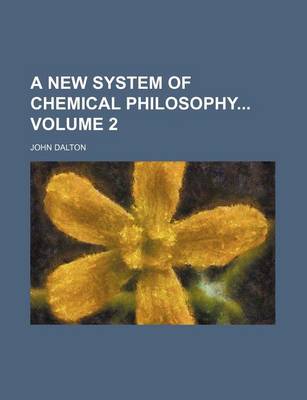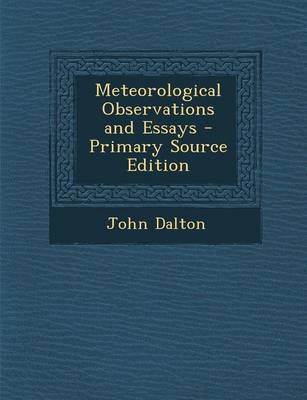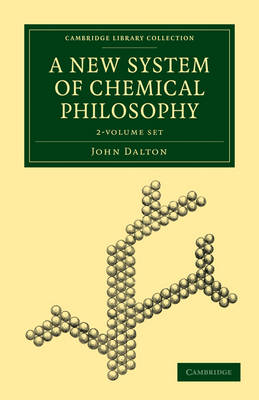Cambridge Library Collection - Physical Sciences
2 primary works • 5 total works
Volume 1
The chemist and meteorologist John Dalton (1766–1844) published A New System of Chemical Philosophy in two volumes, between 1808 and 1827. Dalton's discovery of the importance of the relative weight and structure of particles of a compound for explaining chemical reactions transformed atomic theory and laid the basis for much of what is modern chemistry. Volume 1 was published in two parts, in 1808 and 1810. Part 1 offers an account of Dalton's atomic theory. It contains chapters on temperature, the constitution of bodies, chemical synthesis and a number of plates including his famous table of symbols for the atoms of various elements. Part 2 contains a chapter on elementary principles and twelve sections on different groups of two-element compounds. Dalton's work is a monument of nineteenth-century chemistry. It will continue to be read and enjoyed by anybody interested in the history and development of science.
Volume 2
The renowned English chemist and meteorologist John Dalton (1766-1844) published A New System of Chemical Philosophy in two volumes, between 1808 and 1827. Dalton's discovery of the importance of the relative weight and structure of particles of a compound for explaining chemical reactions transformed atomic theory and laid the basis for much of what is modern chemistry. Volume 2 was published in 1827. It contains sections examining the weights and structures of two-element compounds in five different groups: metallic oxides; earthly, alkaline and metallic sulphurets; earthly, alkaline and metallic phosphurets; carburet; and metallic alloys. An appendix contains a selection of brief notes and tables, including a new table of the relative weights of atoms. A planned second part was never published. Dalton's work is a monument of nineteenth-century chemistry. It will continue to be read and enjoyed by anybody interested in the history and development of science.
The renowned English chemist and meteorologist John Dalton (1766-1844) published A New System of Chemical Philosophy in two volumes, between 1808 and 1827. Dalton's discovery of the importance of the relative weight and structure of particles of a compound for explaining chemical reactions transformed atomic theory and laid the basis for much of what is modern chemistry. Volume 2 was published in 1827. It contains sections examining the weights and structures of two-element compounds in five different groups: metallic oxides; earthly, alkaline and metallic sulphurets; earthly, alkaline and metallic phosphurets; carburet; and metallic alloys. An appendix contains a selection of brief notes and tables, including a new table of the relative weights of atoms. A planned second part was never published. Dalton's work is a monument of nineteenth-century chemistry. It will continue to be read and enjoyed by anybody interested in the history and development of science.
Famed for his seminal work in the development of atomic theory, John Dalton (1766-1844) was a chemist and natural philosopher who served for years as professor of mathematics and natural philosophy at the New College, Manchester. Dalton was born into a Quaker family in the Lake District; his early interest in weather was inspired by a local instrument-maker and meteorologist. He began keeping a meteorological diary in 1787, and this 1793 book is one of his earliest publications. It contains not only meteorological observations but also speculations about their causes. Beginning with a description of the instruments needed to undertake such investigations, Dalton considers a variety of natural phenomena, finishing by offering various theories on the causes of the Aurora Borealis. This book also contains many of the ideas that would go on to be developed in his future research and publications, for which he is better known.
The renowned English chemist and meteorologist John Dalton (1766-1844) published A New System of Chemical Philosophy in two volumes, between 1808 and 1827. Dalton's discovery of the importance of the relative weight and structure of particles of a compound for explaining chemical reactions transformed atomic theory and laid the basis for much of what is modern chemistry. Volume 1, published 1808-1810, introduces Dalton's atomic theory and includes the results he obtained for the weights and structures of twelve groups of compounds. Volume 2, 1827, contains sections examining the weights and structures of two-element compounds for five different compound groups along with various notes and tables. Dalton's work is a monument of nineteenth-century chemistry. It will continue to be read and enjoyed by anybody interested in the history and development of science.



